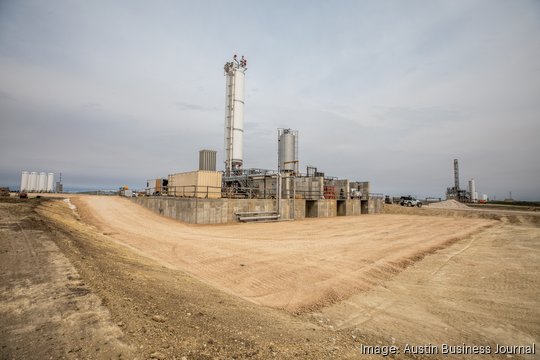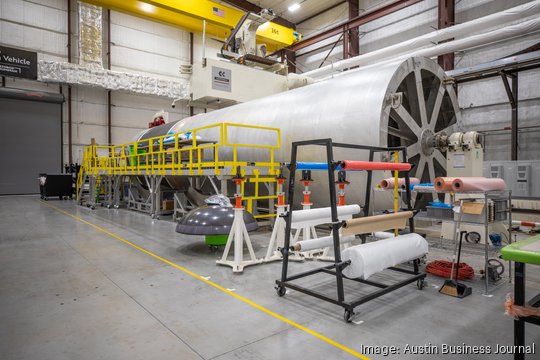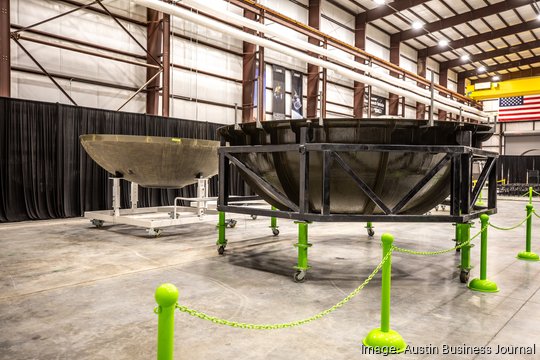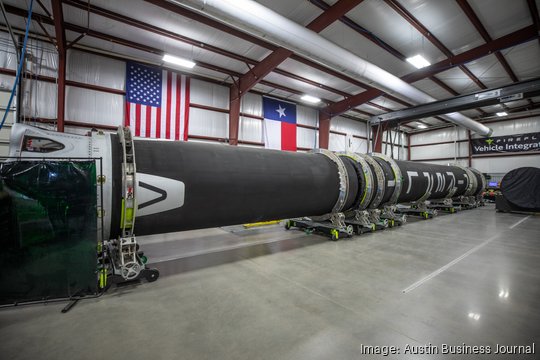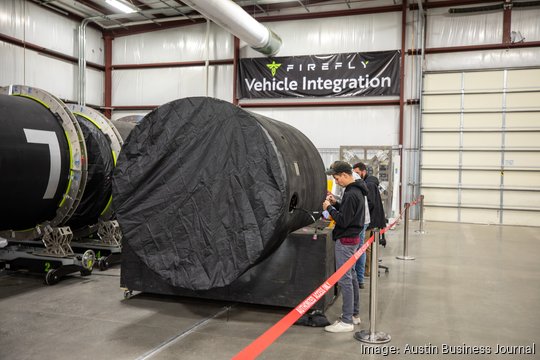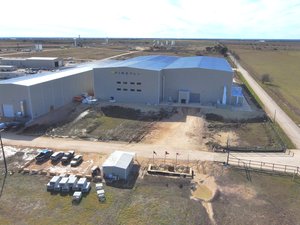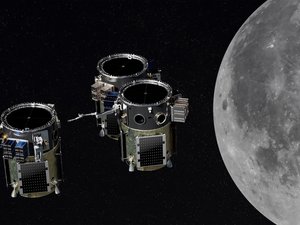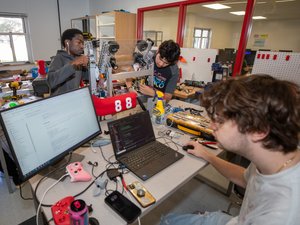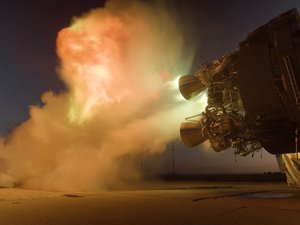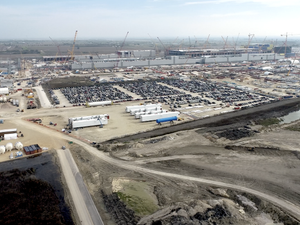Firefly Aerospace is on the rise.
What started with one rocket testing stand in rural Central Texas has grown into a commercial space payload company that plans four rocket launches this year, six to eight next year and a dozen in 2026.
To accommodate the increasingly fast pace of rocket production, Firefly recently revealed that it has doubled its manufacturing space and added new rocket testing stands where it fires the engines up on the ground to help troubleshoot and prove out their capabilities.
Firefly's expansion and its new contract with Northrup Grumman Corp. could spur more growth in and around Briggs, a small, sleepy town north of Leander, Firefly CEO Bill Weber told the Business Journal.
Firefly Aerospace 'Rocket Ranch'
"There's a dozen suppliers that would love to be located in a building right over there or co-located with us," he said, gesturing to one of Firefly's large new manufacturing and development buildings in Briggs. "So it (could serve) as a magnet, where it becomes kind of a Rocket City. It creates a hub in Central Texas, where if you're going to do rocket development, and lander development and testing for orbital vehicles, why wouldn't you go to where industry is?"
The Austin area has seen this dynamic play out several times in recent years as big manufacturing developments by Tesla Inc. and Samsung Electronics Co. Ltd. have attracted dozens of parts suppliers and service partners to find nearby plots to open their own shops and find efficiencies by being so close to their biggest clients and partners.
Firefly isn't on the same scale as Tesla or Samsung. But Weber said the company's continued growth, venture funding and fresh contracts with government agencies and private businesses have put it on the path to lure in new partners who may open regional offices and manufacturing centers to be closer to Firefly's testing facilities. Weber said it would help the rocket maker rapidly iterate.
Being located within Firefly's manufacturing campus or near it makes that process more efficient, he said. "If something has to change, they do it there, they bring it here, we'll put it on test stand and rinse and repeat."
But it takes a certain scale of rocket production to make that happen.
One of the biggest factors may be the 2022 contract between Firefly and Northrop Grumman that has the startup and established aerospace giant working together on the Antares 330 engine that will use seven of Firefly’s Miranda engines to propel medium-sized launch vehicles into orbit for commercial, civil and national security deployments, as well as carrying cargo to the International Space Station for NASA.
That partnership could last a decade more, Weber said, and it's part of the reason Firefly is ramping up production at a fast clip, which in turn will lure aerospace suppliers and developers to the Briggs area.
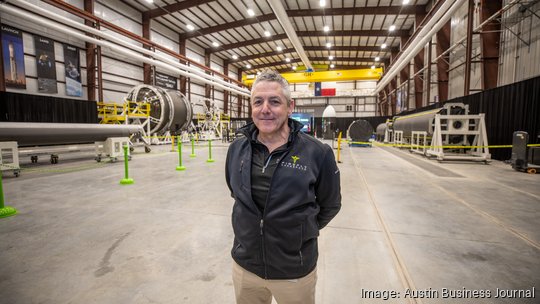
"They won't do that when you're flying one rocket a year," Weber said. "They'll do it when alpha is flying four this year, six next year, and a dozen the year after that, or when something like the medium launch vehicle is coming online. So you've got to get there first. And then they co-locate, they build around, and there will literally be an industrial park that's space-centric right here. Another 10 years from where we are, that's what you'll see. And on and on it goes."
And, the redevelopment of the U.S. 183 toll road, would add to the efficiency.
Risky business
It's an obviously risky business to be rocketing satellites into orbit or sending research landers to the moon. Meanwhile, there are no shortage of headlines about the threats posed by orbital debris or even the U.S. assertion that Russia wants to develop nuclear weapons that could destroy critical satellites.
But Firefly's existential risks generally have more to do with venture capital funding and government contracts than explosions in the sky.
"The risk is not, 'Well, is there a market for it?' That's established. The risk is not, 'Well, technologically, can we do that?' We've solved many, if not most of the challenges, and those that we haven't solved yet are solvable," Weber said.
Meanwhile, geopolitical concerns always ebb and flow.
"We build our business thinking that we will compete against anybody in the world on what we do," he said. "Now, in times where you can't use Chinese or Russian capacity, for example, then our business may be better. But you don't ever plan on that case, you have to think long term of what would open-field competition look like?"
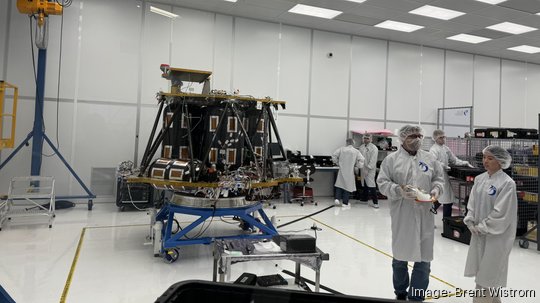
So the risk for most space-bound businesses is capital, he said. That means government budgets that can increase or decrease taxpayer dollars that flow to aerospace contracts, as well as the fickle nature of venture capital funding that can propel companies like Firefly to success or leave it starved for the money it needs to constantly improve on its rockets and moon landers.
That's one of the reason Firefly works to keep close relations with politicians regardless of party, as well as government agencies. And, while the company recently raised a whopping $300 million in new funding, Firefly has to constantly be in fundraising mode.
"If you can raise, you must raise," he said. "If there is capacity and desire and interest, you have no choice but to stay out on the street and continue to fundraise. So Firefly, for the foreseeable future, whether we need the capital or not, we have to stay in the minds of investors who think this could be somewhere they want to occupy."
